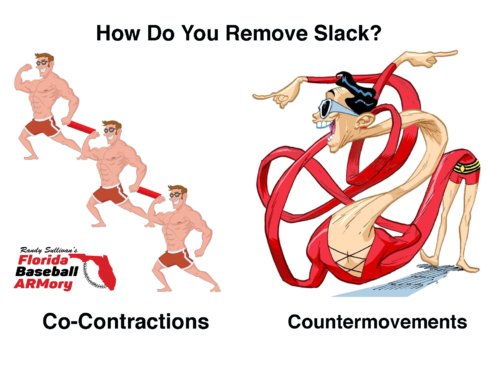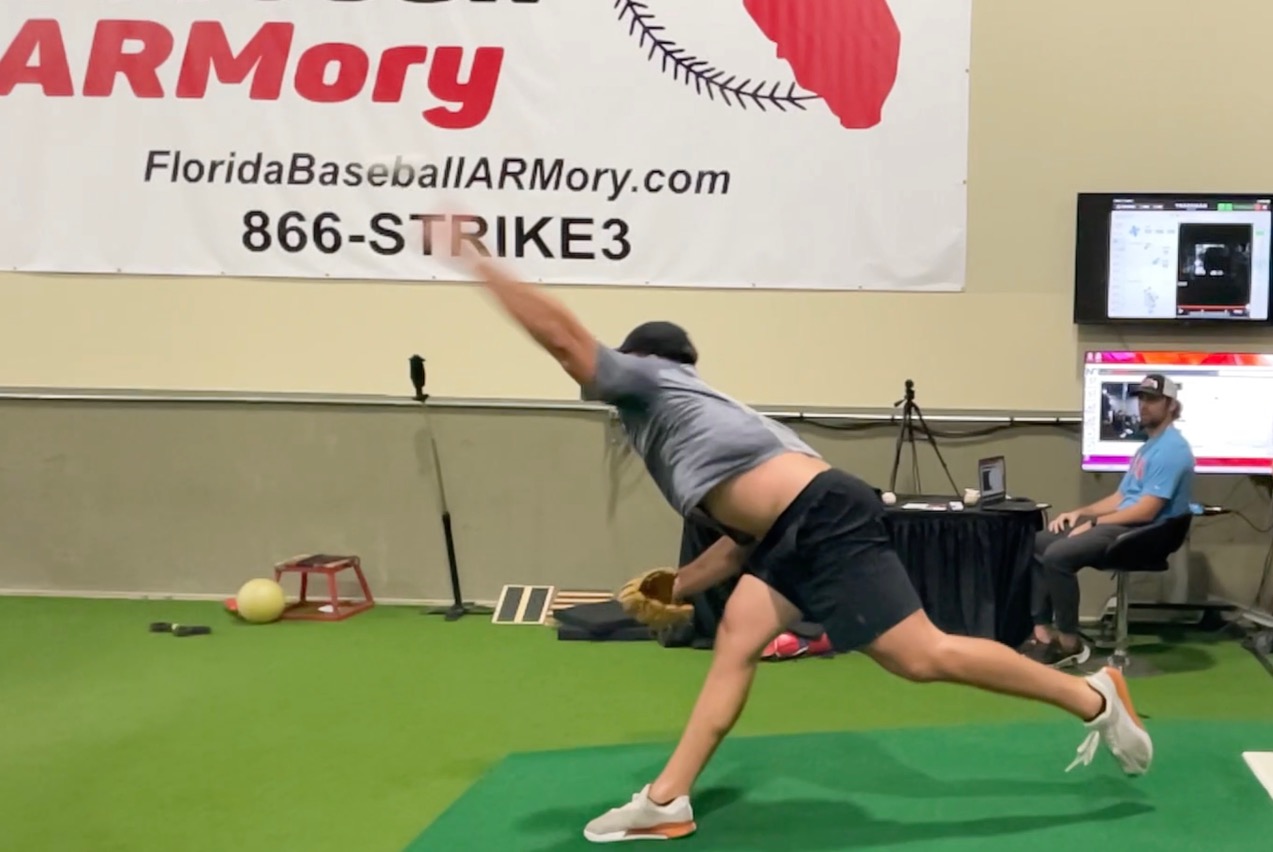
Let’s take a closer look at the concept of extension in pitching. Releasing the ball closer to home plate? Definitely a plus. But it’s not just about getting closer – it's how you get there that counts.
Mistakes to Avoid in Achieving Extension
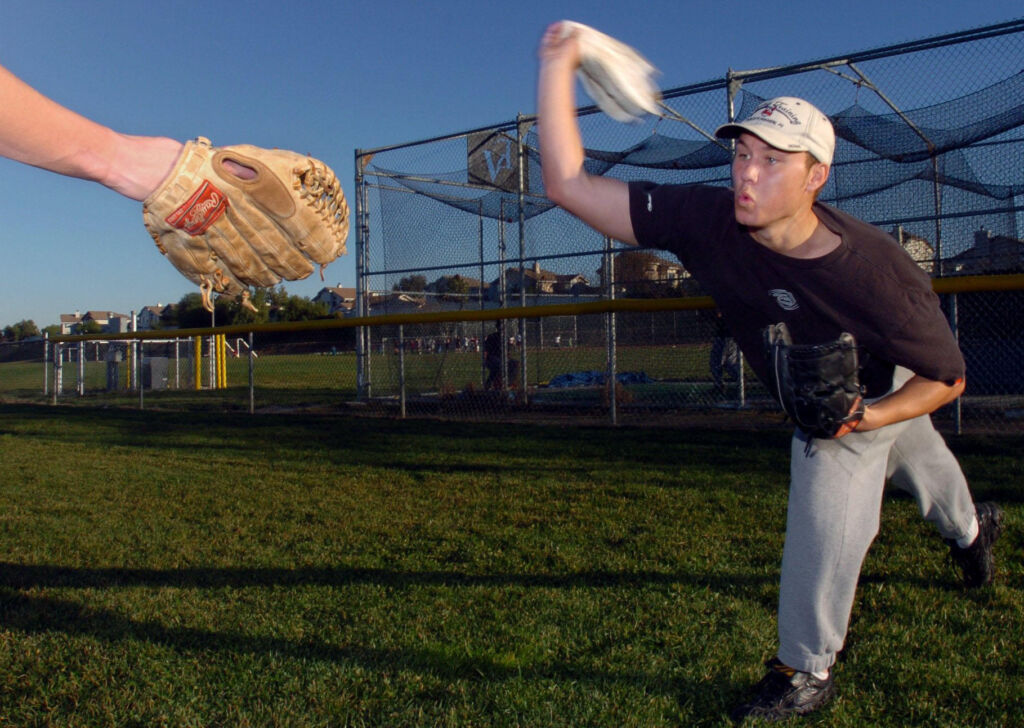
Jumping or leaping down the mound might seem like an obvious choice to get closer to the plate, but it's a mistake. Similarly, just leaning forward or simply extending your arm (as demonstrated in the all-too-common towel drill) isn't the answer.
Such methods can lead to what I term as “false extension”.
The Role of the Pelvis in Authentic Extension
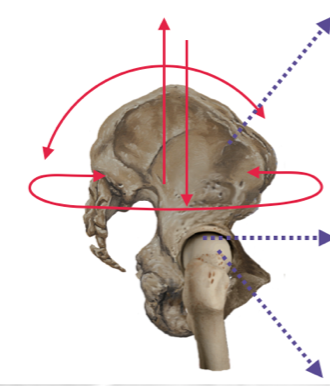
PC: Frans Bosch
Authentic extension is the goal here. And guess what holds the secret? The pelvis. You must control the pelvis in three planes — frontal, sagittal, and transverse. It’s the holy trinity of the pelvis: hinge it, lock it, close it.
Understanding the 4-bar System
As the delivery commences, a hinge of the back helps to remove slack from the hip complex, braces the hamstrings, and centers the femur's head in the acetabulum. An isometric hinge of the back hip, laterally tilts the pelvis. It’s essential to properly align the angle of knee flexion and hip flexion, a concept popularly known as the 4-bar system. For example, you can't bend your hip and not bend your knee. Likewise, you shouldn't bend your knee while keeping your hip neutral or in extension.
The 4-bar system is a mechanism used in both physics and anatomy that consists of four rigid rods (2 that resist push forces and 2 that resist pull forces) which are connected by joints. In physics, this system is used to convert rotational motion into linear motion, making it a fundamental component of many machines and devices such as engines and pumps. In anatomy, the 4-bar system is used to describe the movement of joints and limbs in the human body, particularly joints connected by biarticular muscles. This system is essential in understanding how muscles and bones work together to create movement and perform various tasks. By analyzing the 4-bar system in both physics and anatomy, we can gain a better understanding of the principles behind motion and movement.

PC Frans Bosch
The 4-bar system plays an important role during the hip hinge on the back leg of the pitching delivery. In this system, the energy transporting bi-articular muscles, such as the hamstrings and rectus femoris, work together to maintain rigidity and avoid changes in length. The hamstrings transfer energy from the knee to the hip, while the rectus femoris transfers energy from the hip to the knee. During the load and ride phase, the hamstrings direct the ground-reaction force forward for efficient speedy movement, while the rectus femoris directs it upward, which is vital in single-leg high-intensity activity. By working in tandem, these muscles control pelvic position and ensure maximal energy is gathered and a smoothly and powerfully transported from the legs to the torso.
The Glutes and The Magic of Hip Internal Rotation
As you ride down the mound, your glutes play a pivotal role. They help maintain the tilt of the pelvis. This challenges their ability to maintain pelvic tilt. There's a critical moment when the rear femur internally rotates. The efficiency and timing of clean internal rotation of the back hip during the hip hinge is of the utmost importance. As the pitcher rides down the mound, the gluteals, are pushed towards the boundary of their optimal lengths and functionality. Internal rotation of the back femur restores the length of the gluteals, thereby allowing for maximal force production and efficiency.
The timing of rear hip internal rotation is absolutely vital. Yet, every pitch varies slightly, making precise repeatability impossible. The key is to keep the pelvis tilted for an extended duration. Just as in our Newtforce study. This provides anatomical options (affordances), ensuring that no matter when the femur's decides to rotate, it remains centered in the hip socket.
The Concept of Hip Lock
Bosch's Anatomy of Agility introduces the construct of a hip lock for running and agility-based activities in an open skill environment. In the context of pitching, we adapt the definition of a hip lock to describe an isometric co-contraction that momentarily halts rotation of the pelvis in the transverse plane. This action assists with joint centration of the femur in the acetabulum, streamlining and simplifying internal rotation of the back hip. If the back of side of the pelvis rotates forward in the transverse plane too early too late, the head of the femur will slide away from the center of rotation in the acetabulum. When the femur translates linearly, the axes around which efficient rotation can occur are limited. During a pitch, a well-timed co-contraction briefly stops transverse plane rotation of the pelvis which limits degrees of freedom, avoids femoral head translation, and simplifies the execution of trail hip internal rotation. Momentarily stopping forward pelvic rotation also “charges” the abdominals and begins optimizing their length, preparing them to transport energy up the chain.
Closing the Front Door of the Pelvis
In agility-based activities, there are two ways to stop the pelvis from rotating in the transverse plane, form closure and force closure. Form closure occurs when the athlete achieves swing leg retraction and foot plant from above. In this case, the hip, knee, and ankle joints will assume optimal joint congruency, placing the surrounding musculature near optimal length. Pretension in the gluteus maximus will activate the required preflexes to control the lead leg and correct any landing errors. The front leg will land with the knee and hip in reasonably equivalent degrees of flexion, facilitating joint coupling. This will place the rigid iliotibial band behind the lateral femoral condyle as it crosses the knee. As the pelvis rotates in the transverse plane, the femur will remain seated in the sweet spot in the acetabulum. The pelvis will use up all available transverse plane rotation, and lead hip flexion will stop. With the lead hip in flexion the tensor fascia lata, iliotibial band, and gluteus maximus will resist rearward rotation of the pelvis. Swing leg retraction and foot plant from above are prerequisites to form closure.
Sometimes in sports, an athlete doesn’t have time for swing leg retraction and foot plant from above. When an opponent is close, and the athlete must stop suddenly before changing directions. In this case, force closure (also known as “extended force closure”) is a viable alternative. Force closure is a process that takes place when the muscle groups surrounding the sacroiliac joint— a crucial joint located where the base of the spine (the sacrum) connects with the two hip bones (ilium) — are activated to stabilize the pelvic region. This mechanism essentially creates a tension loop around the sacroiliac joint, reinforcing stability and support in the pelvic area.
In pitching, form closure of the front side is related hip lock on the back leg. If the back hip locks on time (while the lead leg is airborne), the lead leg will retract, and the foot will land from above. This facilitates form closure of the pelvis as described above. Force closure is a viable alternative to form closure. If swing leg retraction and foot plant from above do not occur, and the athlete’s front foot slides into landing, the athlete needs to produce a well-timed emergency cocontraction in the lead leg, potentially disrupting the subsequence movement. Additional emergency internal rotation of the lead hip will keep femoral head centered in the acetabulum and prevent the knee from flexing too much or extending prematurely.
The timing of lead knee extension is critical. If the pitcher keeps the knee flexed until hip flexion and pelvic rotation stop, the iliotibial band will remain tensely positioned behind the lateral femoral condyle. In this position, the iliotibial band is well-equipped to hold the femur in place and keep leading knee from veering off laterally. This maneuver assures compliance with proximal to distal action and joint coupling attractors. It will permit the lead leg’s tensor fascia lata, iliotibial band, and gluteus maximus to control the pelvis in the transverse and sagittal planes. If the knee extends before hip flexion and pelvic rotation are complete (in what is commonly called “lead leg blocking” – a violation of proximal to distal action and joint coupling attractors), the iliotibial band will slip forward of the lateral femoral condyle. With the tensor fascia lata, iliotibial band and gluteus maximus now slackened, controlling transverse plane and preventing the pelvis from dumping forward in the sagittal plane will be virtually impossible.
Any ill-timed emergency co-contraction in the lead leg could potentially disrupt the subsequent movement. One crucial factor in managing this delicate balance is the gluteus maximus's role and its relationship with the iliotibial band, to which it's attached. High tension in the gluteus maximus can prompt the hip to abduct and externally rotate, causing the knee to veer outward.
At the same time, forces from the same gluteal-iliotibial complex can push the knee inward. This dual force effect means that the activation of the gluteal-iliotibial complex must be perfectly timed – neither too much nor too little – essentially requiring precise control of the transverse plane motion of the pelvis. The timing and intensity of this activation play a crucial role in ensuring smooth and efficient movement, preventing disruptions that can impact an athlete's performance.
This critical step prevents the front pelvis from rotating laterally or rearward, allowing the upper body to catapult forward, achieving authentic extension.
Failure to control the pelvis often results in the ball releasing even with or behind your head, which is detrimental.
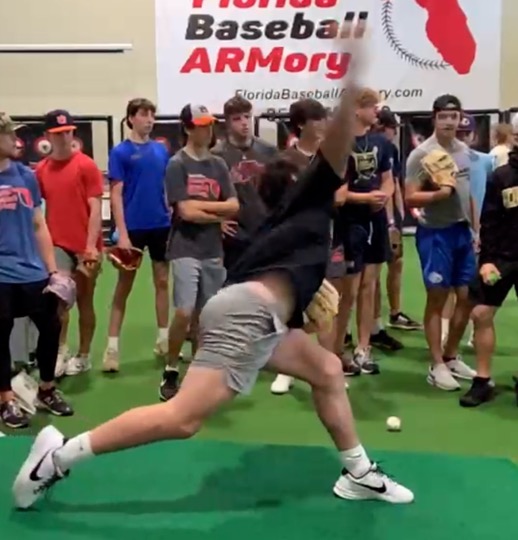
Such mistakes aren’t only unhealthy; they rob you of time you could use to add apply force to the ball (negatively influencing velocity), and they compromise your command. Moreover, when you fail to achieve authentic extension, it’s nearly impossible to make a breaking ball move downward or horizontally before it pops up.
Conclusion
For a pitcher, mastering the authentic extension is invaluable. It’s not merely about releasing the ball closer to the plate but harnessing your body's innate power and synchronization. By understanding and controlling the 3 planes of pelvic motion, a pitcher can elevate their game to the next level. It's all about the journey to the holy grail: Authentic Extension.
If you're ready to learn more about our heralded SAVAGE Training system, and anatomically-based, ecological dynamics approach to pitcher and hitter training, register for one of our SAVAGE Weekend Boot Camps by CLICKING HERE.
Pitchers will increase their velocity, improve their command, and develop nasty, swing-and-miss secondary stuff — all while remaining healthy and durable.
Hitters will maximize their bat speed, exit velocity, and SMASH factor. They'll become dangerous, adaptable offensive threats that smash balls and rarely strike out.
If that sounds good to you, call us at 866-787-4533, and Let's Get SAVAGE!

Randy Sullivan, MPT, CSCS CEO, Florida Baseball ARMory


